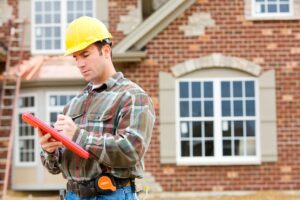There’s nothing worse than delays and other obstacles that slow down a home improvement project. One quick way to put a halt to things is to ignore local building codes and permits. While they operate behind the scenes, these regulations are far from insignificant.
In this discussion, we’ll talk about why comprehending and adhering to these standards is more than a formality. It’s protection for your investment and your family’s safety.
Come with us as we share what homeowners need to know about making sure their projects are up to code.
Local governments establish building codes to ensure safe and structurally sound construction within their jurisdictions. These codes exist primarily to safeguard public safety and protect property values. Common building codes include regulations for:
By adhering to building codes, homeowners and builders contribute to the orderly development of their neighborhoods. They also do what’s required to ensure safe buildings in the community.
Your local building department plays a pivotal role in enforcing building codes. They review and approve building plans, inspect construction sites at various stages, and issue permits. Their goal is to ensure that all construction work aligns with the established codes and standards.
Non-compliance can lead to inconvenient consequences. The building department in your city may require you to stop work on your construction project until you comply.

Non-compliance with building codes can have far-reaching consequences. It often results in substandard quality, which can lead to structural failures, leaks, electrical issues, and other deficiencies.
All of the above lead to safety hazards, putting the lives of occupants at risk. Failure to comply with local building codes can cause legal issues. Those issues could subject the homeowner to fines, legal disputes, or even forced demolition of non-compliant structures.
The scope and nature of your project determine whether you need to apply for a building permit. For example, major renovations or new construction almost always require permits.
Obtaining permits involves several steps. It starts with submitting a permit application to the local building department. After review and approval, the department issues the permit, allowing work to begin.
Depending on the project, you may need to schedule inspections at various project milestones to ensure compliance.
If you’re working on a DIY home improvement project, you’ll need to contact your local building department or visit its website to access the required forms and other pertinent information.
Whether you’re building a new home or planning a renovation project, we can’t stress enough the importance of complying with local building codes and permits. Don’t let a piece of paper keep your project from moving forward.
For 23 years, Streamline Construction has built and remodeled homes in Orange County, CA. We stand behind our reputation as a trusted partner in hundreds of custom home-building projects.
Reach out to our team. We’d love to talk with you about how we can help with your upcoming project.